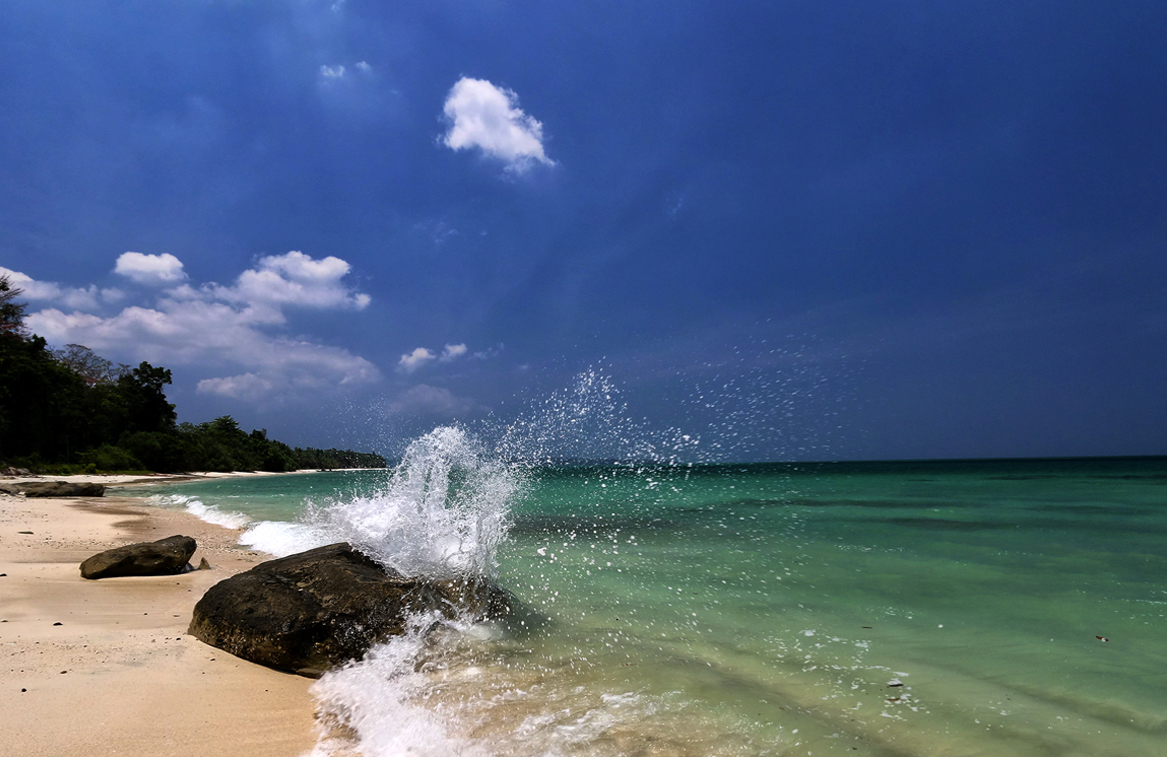Darjeeling: The Queen of the Hills in West Bengal Darjeeling, nestled in the Indian state of West Bengal, is one […]

Historical Significance of the Andaman and Nicobar Islands: A Journey Through Time
The Andaman and Nicobar Islands, an archipelago situated in the Bay of Bengal, hold a rich historical significance that dates back centuries. These islands are not only known for their stunning natural beauty but also for their poignant role in India’s struggle for independence and their diverse cultural heritage. From ancient civilizations to colonial rule, the islands have witnessed numerous historical events that shape their identity today.
Ancient and Indigenous History
The Andaman and Nicobar Islands are home to several indigenous tribes, some of which have inhabited the islands for thousands of years. Tribes such as the Great Andamanese, Onge, Jarawa, and Sentinalese have lived in relative isolation, maintaining their unique cultures and traditions. These tribes are considered some of the last uncontacted peoples on Earth, and their way of life provides invaluable insight into the prehistoric human experience.
The archaeological evidence suggests that the islands were inhabited as early as 2,000 BC, with the discovery of stone tools and remnants of ancient settlements. The rich marine resources and diverse ecosystems made these islands an ideal location for early human settlement.
Colonial Era and Freedom Struggle
The historical significance of the Andaman and Nicobar Islands took a dramatic turn during British colonial rule. In 1858, the British established the infamous Cellular Jail in Port Blair, which was intended to imprison political dissidents and freedom fighters. The jail became a symbol of British oppression and brutality, housing notable figures such as Veer Savarkar and other revolutionaries.
The conditions within the Cellular Jail were harsh, with inmates subjected to forced labor and solitary confinement. The tales of courage and resilience of those imprisoned here are an essential part of India’s freedom struggle narrative. Today, the Cellular Jail has been transformed into a national memorial, where visitors can learn about the sacrifices made by these freedom fighters.
The islands also served as a place for exiled revolutionaries and prisoners. The establishment of penal settlements further emphasizes the colonial exploitation of these islands, where the indigenous populations faced significant upheaval and change due to foreign rule.
Visiting Historical Sites in the Andaman and Nicobar Islands
Visiting the Andaman and Nicobar Islands provides a unique opportunity to explore their historical significance while enjoying their natural beauty. Here’s how to plan your visit:
Getting There
Reach Port Blair: The journey begins at Veer Savarkar International Airport in Port Blair, which is well-connected to major Indian cities like Delhi, Kolkata, and Chennai. Several airlines operate regular flights to Port Blair.
Ferry Services: From Port Blair, travelers can access various islands through ferry services. It’s advisable to check the ferry schedules in advance, as they may vary depending on the weather and season.
Historical Sites to Explore
Cellular Jail: As mentioned, the Cellular Jail is a must-visit site. The jail complex includes a museum that exhibits the history of the freedom struggle. Guided tours often include a light and sound show in the evening, depicting the stories of the prisoners.
Viper Jail: Another historical site, Viper Jail, is located on Viper Island. The ruins of the prison offer a glimpse into the harsh realities faced by inmates during the colonial era.
Ross Island: Once the administrative headquarters of the British, Ross Island is now a hauntingly beautiful site, with remnants of colonial architecture amidst lush greenery. The ruins serve as a testament to the colonial past and offer insights into the lives of the British officials.
Samudrika Naval Marine Museum: Located in Port Blair, this museum showcases the rich marine biodiversity of the Andaman and Nicobar Islands while also highlighting the historical significance of the region.
Anthropological Museum: This museum offers insights into the indigenous tribes of the islands, showcasing artifacts, tools, and cultural displays that represent their way of life.
Best Time to Visit
The ideal time to explore the Andaman and Nicobar Islands is from October to May. During this period, the weather is pleasant, making it suitable for outdoor activities and sightseeing. The summer months can be hot and humid, while the monsoon season brings heavy rainfall, which may affect travel plans.
Conclusion
The Andaman and Nicobar Islands are more than just a tropical paradise; they are a treasure trove of history and culture. The stories of resilience, struggle, and survival echo through the ruins and landscapes, providing visitors with a profound understanding of India’s past. As you explore the historical sites, you will not only witness the beauty of the islands but also pay homage to the sacrifices made by those who fought for freedom. A journey to the Andaman and Nicobar Islands promises a unique blend of history, culture, and natural splendor, making it a destination worth exploring. Plan your visit to uncover the historical significance of this remarkable archipelago today!

